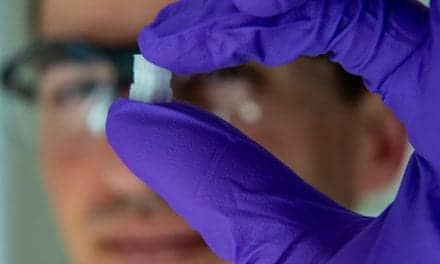A study published recently in Cell Metabolism offers the suggestion that aerobic exercise benefits may be possible pharmacologically for people who are elderly, obese, or otherwise limited in their mobility.
“It’s well known that people can improve their aerobic endurance through training,” says the study’s senior author Ronald Evans, Howard Hughes Medical Institute investigator and holder of Salk’s March of Dimes Chair in Molecular and Developmental Biology, in a media release.
“The question for us was: how does endurance work? And if we really understand the science, can we replace training with a drug?”
A previous study by Evans and his team looked at a particular gene called PPAR delta (PPARD). The media release, from Salk Institute, explains that mice genetically engineered to have permanently activated PPARD became long-distance runners who were resistant to weight gain and highly responsive to insulin—all qualities associated with physical fitness. The team found that a chemical compound called GW1516 (GW) similarly activated PPARD, replicating the weight control and insulin responsiveness in normal mice that had been seen in the engineered ones. However, GW did not affect endurance (how long the mice could run) unless coupled with daily exercise, which defeated the purpose of using it to replace exercise.
In their current study using sedentary mice, Evans and his team gave the mice a higher dose of GW, for a longer period of time (8 weeks instead of 4). Both the mice that received the GW and those that did not (the control group) were subjected to treadmill tests to see how long they could run until they became exhausted.
Mice in the control group could run about 160 minutes before exhaustion. Mice on the drug, however, could run about 270 minutes—about 70% longer. For both groups, exhaustion set in when blood sugar (glucose) dropped to around 70 mg/dl, suggesting that low glucose levels (hypoglycemia) are responsible for fatigue, the release states.
“This study suggests that burning fat is less a driver of endurance than a compensatory mechanism to conserve glucose,” says Michael Downes, a Salk senior scientist and co-senior author of the paper, in the release. “PPARD is suppressing all the points that are involved in sugar metabolism in the muscle so glucose can be redirected to the brain, thereby preserving brain function.”
“Exercise activates PPARD, but we’re showing that you can do the same thing without mechanical training. It means you can improve endurance to the equivalent level as someone in training, without all of the physical effort,” adds Weiwei Fan, a Salk research associate and the paper’s first author, per the release.
Pharmaceutical companies are interested in using this research to develop clinical trials for humans, to create a prescription drug based on GW. Possible uses, the release notes, could include not only helping those with obesity and type 2 diabetes, but also to help improve patients’ fitness before and after surgery.
[Source(s): Salk Institute, Science Daily]





